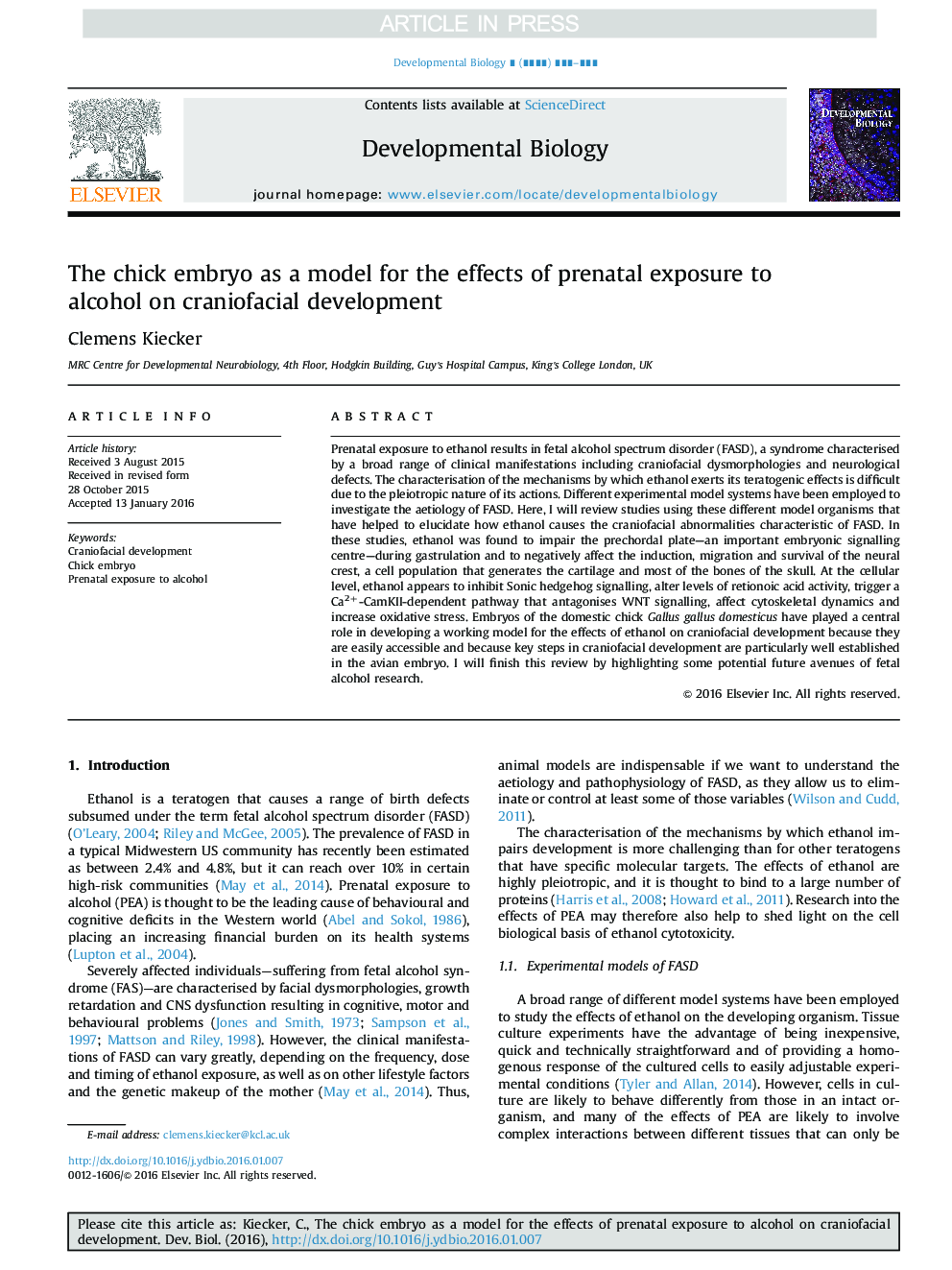| Article ID | Journal | Published Year | Pages | File Type |
|---|---|---|---|---|
| 10931120 | Developmental Biology | 2016 | 12 Pages |
Abstract
Prenatal exposure to ethanol results in fetal alcohol spectrum disorder (FASD), a syndrome characterised by a broad range of clinical manifestations including craniofacial dysmorphologies and neurological defects. The characterisation of the mechanisms by which ethanol exerts its teratogenic effects is difficult due to the pleiotropic nature of its actions. Different experimental model systems have been employed to investigate the aetiology of FASD. Here, I will review studies using these different model organisms that have helped to elucidate how ethanol causes the craniofacial abnormalities characteristic of FASD. In these studies, ethanol was found to impair the prechordal plate-an important embryonic signalling centre-during gastrulation and to negatively affect the induction, migration and survival of the neural crest, a cell population that generates the cartilage and most of the bones of the skull. At the cellular level, ethanol appears to inhibit Sonic hedgehog signalling, alter levels of retionoic acid activity, trigger a Ca2+-CamKII-dependent pathway that antagonises WNT signalling, affect cytoskeletal dynamics and increase oxidative stress. Embryos of the domestic chick Gallus gallus domesticus have played a central role in developing a working model for the effects of ethanol on craniofacial development because they are easily accessible and because key steps in craniofacial development are particularly well established in the avian embryo. I will finish this review by highlighting some potential future avenues of fetal alcohol research.
Keywords
Related Topics
Life Sciences
Biochemistry, Genetics and Molecular Biology
Cell Biology
Authors
Clemens Kiecker,
